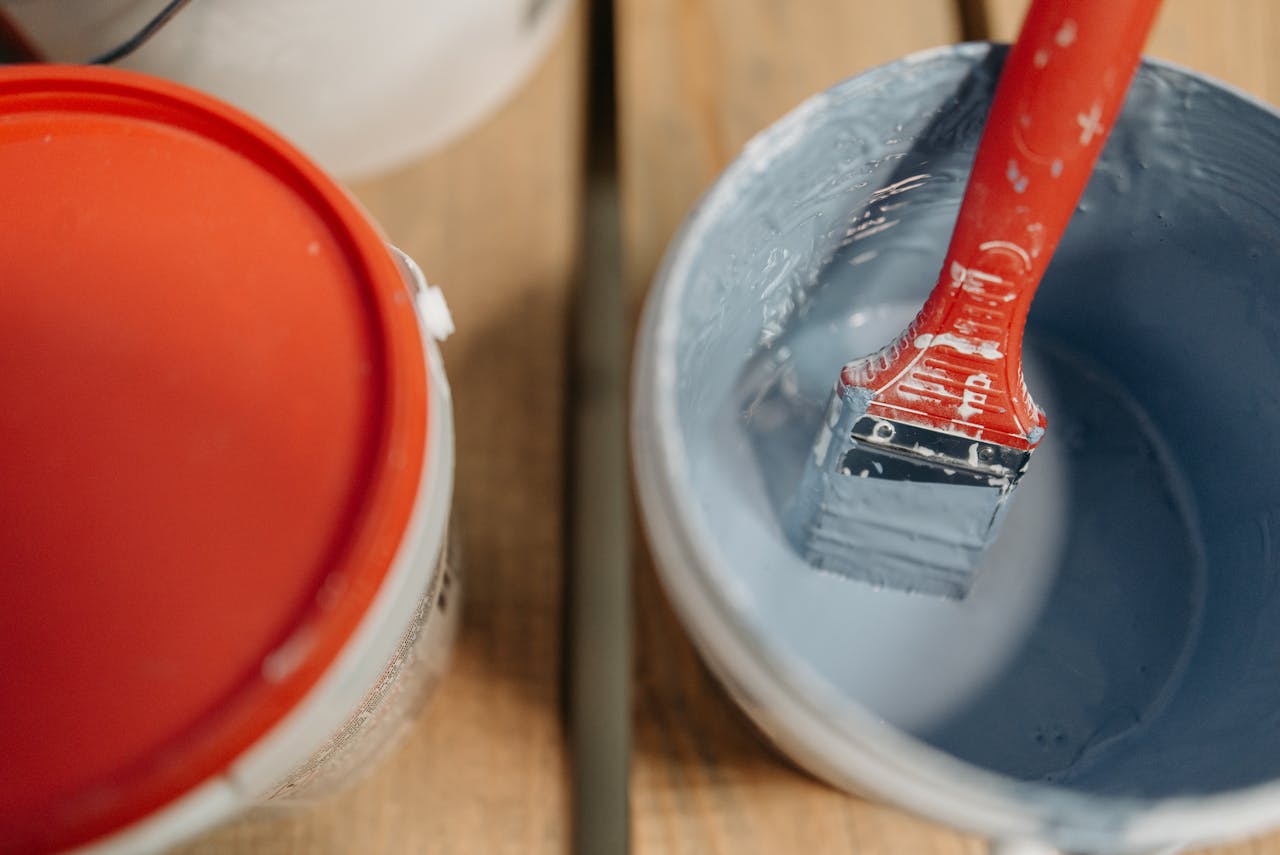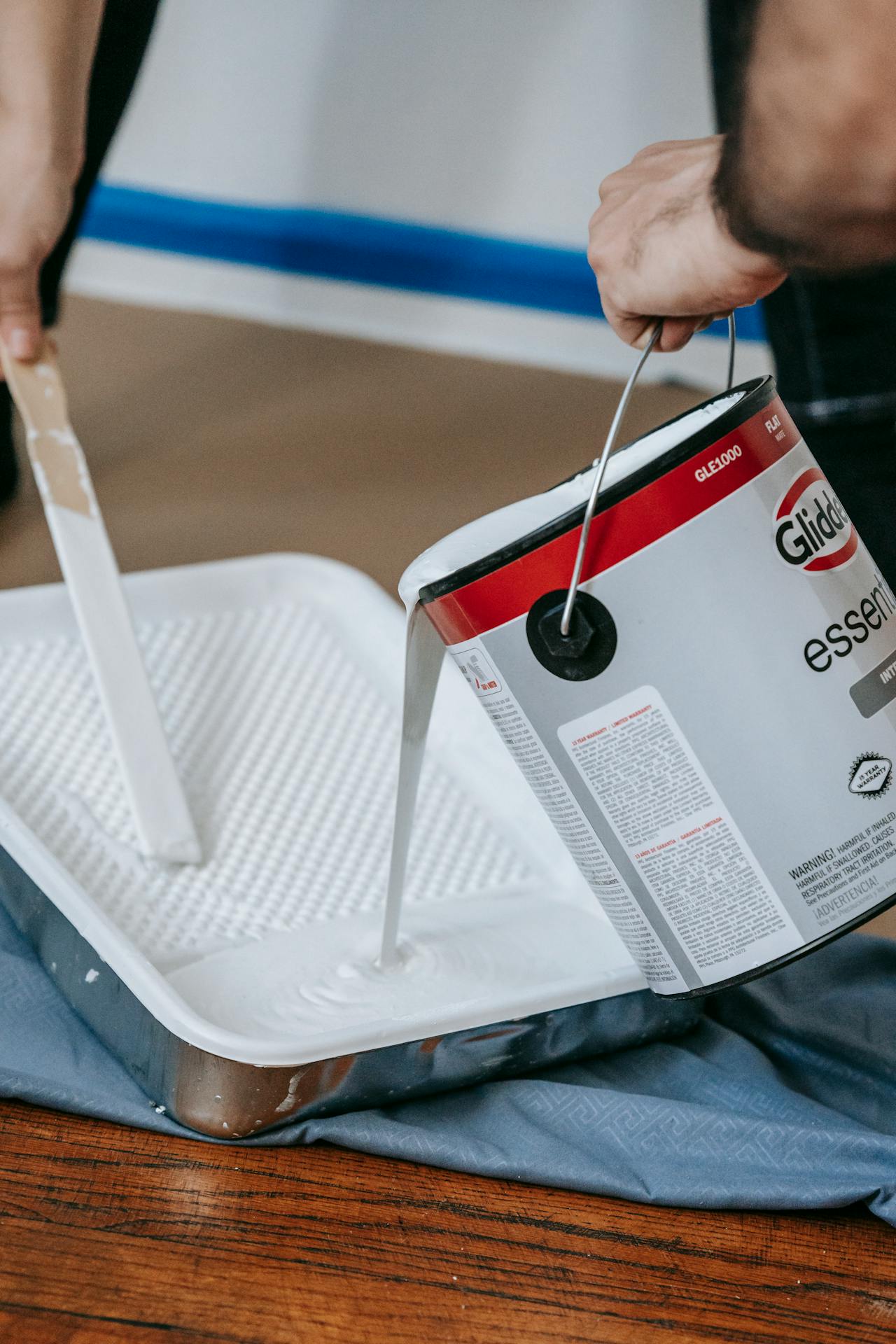Using lead-free paint for home painting is safer for your family. Lead-based paints can cause health problems, especially in children and pregnant women. Modern lead-free paints provide a safe alternative while offering the same quality and durability. In this article, we will discuss why you should choose lead-free paint and how to ensure you are using the right products for your home.
What is Lead-Free Paint?
Lead-free paint is paint that does not contain lead as an ingredient. Lead was once commonly used in paint because it helped the paint dry faster and last longer. However, it was discovered that lead can cause serious health problems, especially in young children and pregnant women.
Today, lead-free paints are widely available and are designed to be safe for both people and the environment. These paints use alternative ingredients to achieve the same durability and finish without the harmful effects of lead. Lead-free paint is used in homes, schools, and other places where people spend a lot of time to reduce the risk of lead poisoning.
Using lead-free paint is especially important in homes built before 1978, as older paints may still contain lead. Removing or covering old lead-based paint with lead-free paint can help protect your family from the dangers of lead exposure.
What to Do When Your House Has Lead-Painted Walls
If you bought an old house built before 1978, it is best to ensure that lead paint was not used to paint its walls, ceilings, or floors. Here are some tips on what to do.
- Test for Lead: You can use a lead testing kit or hire a professional to determine if your paint contains lead.
- Avoid Disturbing the Paint: Do not sand, scrape, or heat lead paint, as this can release harmful lead dust. Keep the paint intact to prevent exposure.
- Keep Surfaces Clean: Regularly clean floors, window sills, and other surfaces with a damp cloth to remove any lead dust. Use a HEPA filter vacuum for carpets and rugs.
- Seal the Lead Paint: Apply a sealant or encapsulant over the lead paint to prevent it from chipping or deteriorating. This can be a temporary solution until you can remove the lead paint.
- Hire a Professional: Consider hiring a certified lead abatement contractor to remove or encapsulate the lead paint safely. These professionals have the training and equipment to handle lead safely. Custom Painting, Inc. is not certified to complete lead abatement but may make suggestions for contractors who are certified.
- Wash Hands Frequently: Make sure everyone in the household washes their hands frequently, especially before eating. This reduces the risk of ingesting lead dust.
- Replace Windows and Doors: If the lead paint is on windows and doors, consider replacing them. Friction from opening and closing can release lead dust into the air.
- Cover the Paint: Use wallpaper, drywall, or paneling to cover lead-painted walls. This provides a barrier and reduces the risk of exposure.
- Monitor Children: Monitor young children to prevent them from chewing on painted surfaces or putting their hands in their mouths. Lead exposure is particularly harmful to children.
- Regular Checkups: Schedule regular checkups with your doctor to monitor for any signs of lead exposure, especially for young children and pregnant women.
Tips for Finding Lead-Free Paint
Here are some tips to help you find lead-free paint online or in physical stores.
Look for Certifications
Check for certifications from reputable organizations like the Environmental Protection Agency (EPA) or Green Seal. These certifications ensure the paint meets safety standards and is free from lead.
Read the Label
Always read the paint label carefully. Look for terms like “lead-free” or “zero VOC” to confirm the paint does not contain lead or other harmful chemicals.
Choose Reputable Brands
Select paint from well-known and reputable brands. These companies are more likely to comply with safety regulations and offer high-quality lead-free products.
Ask for Recommendations
Consult with professionals at your local paint store or home improvement center. Based on their experience and customer feedback, they can recommend trusted lead-free paint options.
Check Online Reviews
Look at online reviews and ratings for different paint products. Reviews provide insights into the performance and safety of the paint, helping you make an informed choice.
Test a Sample
Before purchasing large quantities, test a small sample of the paint. This allows you to check its quality and safety without committing to a full purchase.
Consider Eco-Friendly Options
Many eco-friendly paints are also lead-free. These paints are made from natural ingredients and are safer choices for your home and the environment.
Verify with the Manufacturer
If you have doubts, contact the paint manufacturer directly. They can provide detailed information about their products and confirm that the paint is lead-free.
Look for Low VOCs
Choose paints with low Volatile Organic Compounds (VOCs). Low-VOC paints are less likely to contain harmful chemicals like lead, making them a healthier option.
Compare Prices
While lead-free and eco-friendly paints can be more expensive, it is worth comparing prices to find a product that fits your budget. Investing in safer paint is beneficial for your family’s health.
Conclusion
Using lead-free paint for home painting is a safe and responsible choice. It protects your family from the harmful effects of lead and ensures a healthier living environment.
By choosing certified lead-free products and following safety guidelines, you can achieve beautiful and safe results in your painting projects. For professional help with lead-free painting, contact Custom Painting, Inc. Call us at 925-294-8062 or fill out our Contact Form.



